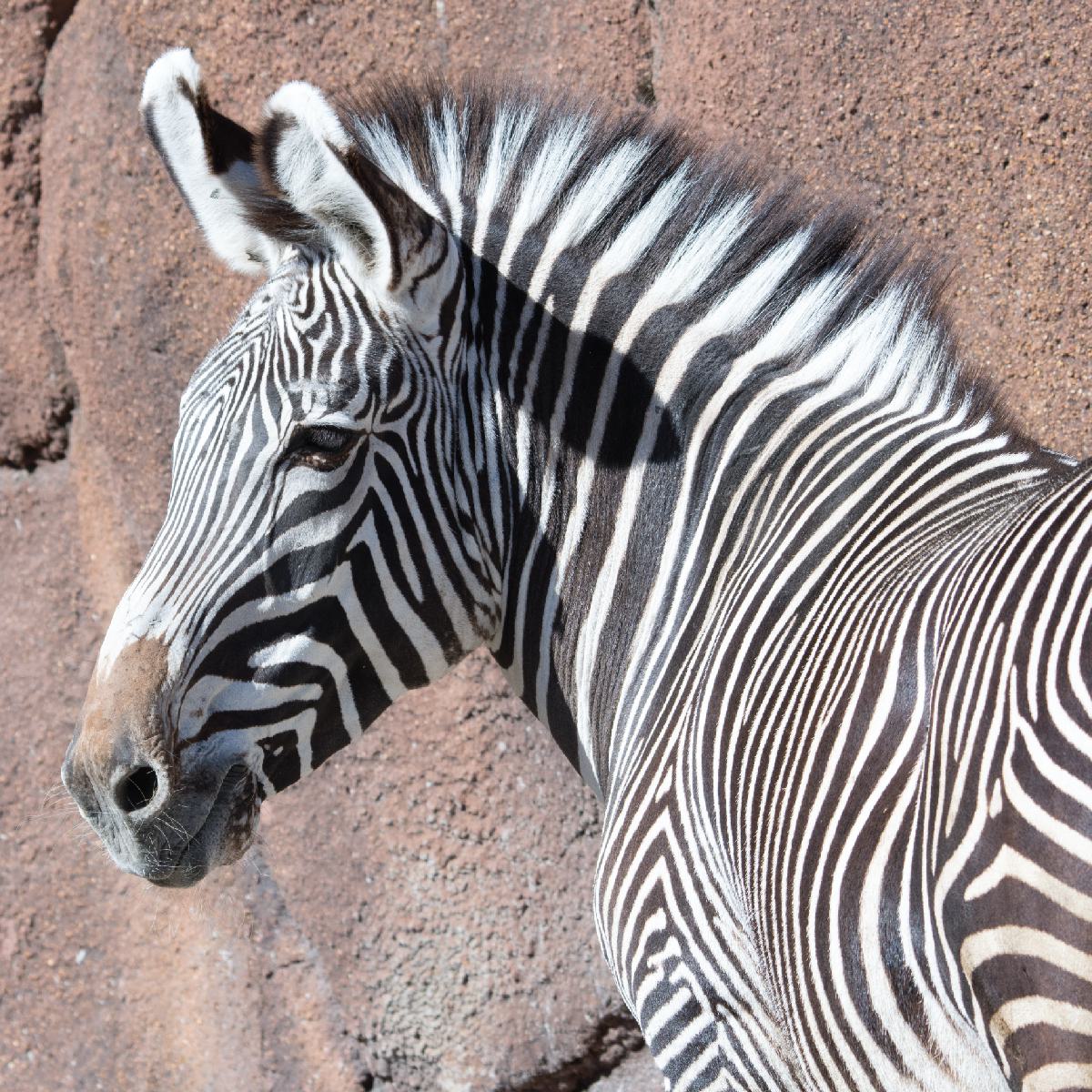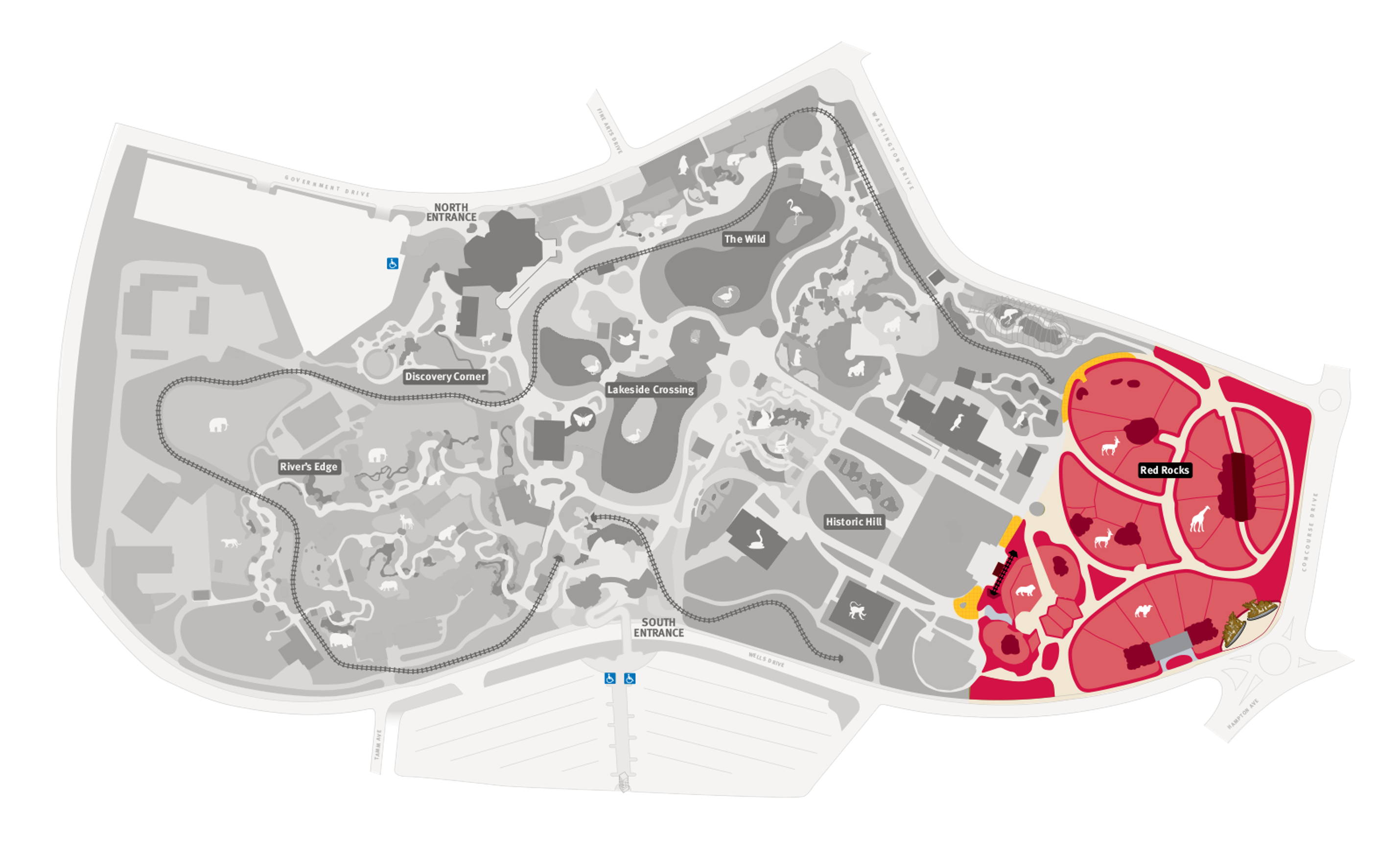
Grevy's Zebra
Equus grevyi
Did you know?
- The Grevy’s zebra is part of the Equidae family, which they share with Somali wild ass and horses.
- They were named in honor of Jules Grevy, president of France's Third Republic, to whom the first known specimen of the animal was sent in 1882.
- They live in scrubland and grassland in northern Kenya and southern Ethiopia.
- Like a human fingerprint, zebra stripes are unique to each zebra.
- After a pregnancy of almost 13 months, a mare will give birth to one foal.
The Largest Zebra
Grevy's zebras are the largest of the three zebra species. They stand at about four to five feet tall at the shoulder and weigh around 750 to 950 pounds. An adult has a long head, long neck with an erect striped mane; and narrow, uniform stripes. Uniquely, its furry ears are extremely large and rounded. They also have brown noses instead of the black noses (like other zebras). They communicate with each other with loud, donkey-like brays.
Mare and Foal
Unlike other zebras, Grevy's zebras do not form permanent herds. The only strong social bond is the one between a mare and her foal. After a 13-month pregnancy, a mare gives birth to a foal, which weighs 80 to 125 pounds. Foals are born with dark brown stripes and fuzzy hair coats. They can walk within an hour of birth, and newborns stay close to their mothers at all times for protection and food. Adult Grevy's zebras can go up to five days without water, however mares with young foals must drink every day.
Threat Level
- Unknown
- Common
- Near Threatened
- Threatened
- Endangered
- Critically Endangered
- Extinct in the Wild
Endangered
The Grevy's Zebra faces a very high risk of extinction in the wild.
Range
Northern Kenya, southern Ethiopia
Habitat
Semi-arid scrubland and grassland

We care about Grevy's Zebra
Grevy’s zebras are endangered due to competition for resources. Humans use their habitat to support livestock.
The Saint Louis Zoo has had a longstanding commitment to the conservation of wild equids, including the Grevy's zebra. We have celebrated the birth of more than 30 Grevy's zebra foals at our Zoo in the last five decades, including the birth of Gloria in 2019. These births are part of the Species Survival Plan for this animal, an effort to help strengthen the Grevy’s zebra population.
The Zoo also works in saving the species in the Horn of Africa. Through the Saint Louis Zoo WildCare Institute Center for Conservation in the Horn of Africa, the Zoo is supporting community-based coalitions and actively establishing a variety of conservation, research and education programs. Learn more about how we are helping Grevy’s zebras in the wild.
Find this animal in Red Rocks

SAINT LOUIS ZOO ZONE
Red Rocks
At Red Rocks, you’ll view some of the world’s most powerful predators living near some of the world’s most graceful prey. Tigers, zebra and giraffes all share the natural rocky boulders and outcroppings as their territory. With shading trees and a bird or two among the mammals, Red Rocks is a great place to spend a day at the Saint Louis Zoo.

